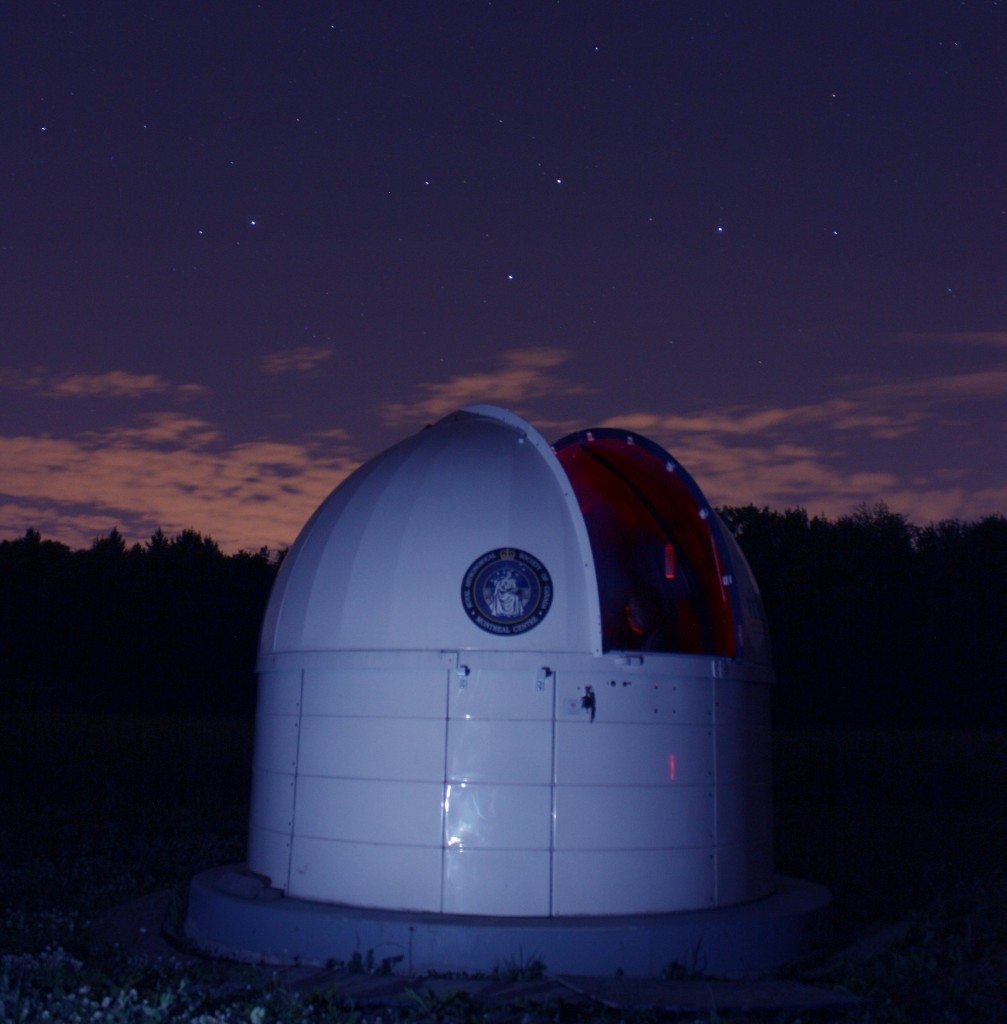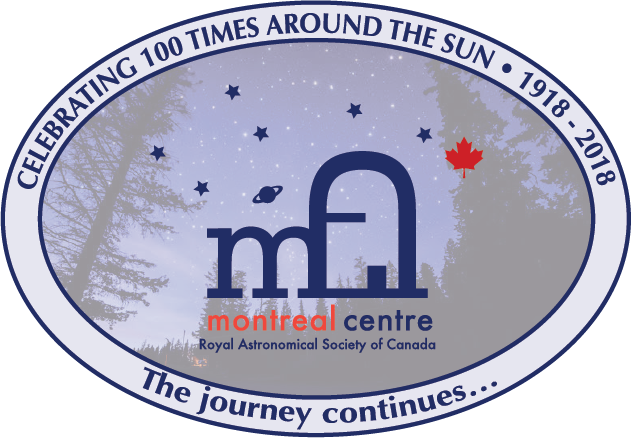
The night sky from the Morgan Arboretum in Ste.Anne-de-Bellevue seen here with the Bellevue Observatory in the foreground, enjoys the darkest skies on the entire island of Montreal. Photo Credit: Andrew Fazekas
PRESS RELEASE
Municipality of Ste. Anne-de-Bellevue Passes Bylaw To Help Reclaim and Conserve the Starry Sky
(Ste. Anne-de-Bellevue, Quebec March 27, 2014) Thanks to a new light pollution abatement by-law enacted by the city of Ste. Anne-de-Bellevue this past December, it will be easier for skywatchers in the municipality to count the stars and ensure local public-access observatory’s pristine views.
The West Island borough of Ste.Anne has adopted a ground-breaking light pollution legislation on December 9, 2013 that will control public lighting to not only reduce wastage of light but also conserve energy.
The new Light Abatement By-Law (757) is the result of successful coordination between Ste. Anne’s councillors in consultation with the Montreal Centre of the Royal Astronomical Society of Canada (RASC) and lighting experts at the Quebec division of the International Dark Sky Association.
This now makes Ste. Anne one of handful of Quebec municipalities and the first on the island of Montreal, leading the efforts to regulate night-time lighting.
The new by- law requires the use of fully shielded luminaires, discouraging lighting above the horizontal for most types of fixtures, limits the direction of lighting into residential dwellings, requires reduction in the amount of energy used for public lighting and defines the time period during which they stay “on”.
The agreement establishes minimum technical requirements (emission, power, duration and lamp type) so as to promote dark sky friendly lighting systems and fixtures, including road, ornamental, monumental, advertising, and private establishments.
Among expected benefits from the new law includes a significant reduction in the light footprint of Ste. Anne-de-Bellevue going forward which will directly benefit views of the night sky from RASC’s Bellevue Observatory for years to come.
“The new-by law does not mean less light, just less light wasted,” said Andrew Fazekas, RASC Montreal Director of Communications.
“Turning lights downward not only saves money, and is environmentally responsible but also ensures the public can continue to enjoy clear views of the starry heavens right here on the island of Montreal while still enjoying the benefits of night-time lights.”
Currently McGill University’s 600 hectare Morgan Arboretum, which is home to the public access astronomical observatory, enjoys the darkest skies on the entire island of Montreal. RASC Montreal and its team of volunteer astronomer members have been conducting free public stargazing parties in the park for more than two decades.
The progressive new by-law therefore will now help protect the stunning, clear views of the night sky the general public has come to expect for generations to come.
Congratulations Ste-Anne,….and well done !
For contact and interviews:
Andrew Fazekas, Director of Public Communications, RASC Montreal
Tel: 514-620-1672
e-mail: andrewsfazekas@gmail.com
Royal Astronomical Society of Canada (RASC)was founded in 1868 when it received its royal charter and has grown into one of the largest amateur stargazing societies in the world. RASC is a non-profit association of nearly 5000 amateur astronomers based in 28 centres in most major cities across the country. The Montreal Centre is one of the oldest, formed in 1918 and quickly developed into one of the largest Centres in the country with about 120 members.
The Montreal Centre has long been known for providing public stargazing opportunities and science outreach programs around the Montreal area.
The Montreal Centre and its members conduct approximately 30 public astronomy education and outreach events annually. Locations include the Morgan Arboretum, schools, parks and local community events. Club members include both amateur and professional astronomers with a wide variety of professional backgrounds.
END

